#forged alloy wheels
Explore tagged Tumblr posts
Text
#alloy wheels#custom rims#car rims#racing wheels#Beadlock Wheels#custom wheels and rims#custom wheels#custom wheel rims#custom 4x4 rims#amg forged wheels#best replica wheels#4x4 beadlock rims#wheel rim manufacturer#forged steel wheels#best wheel manufacturers#forged alloy wheels#Aftermarket wheels online#Forged wheels uae#Forged wheels manufacturers
0 notes
Text






Polestar 6 BST Concept, 2024. Geely's all-electric subsidiary have used the Goodwood Festival of Speed to present a racing version of the Polestar 6 electric sports car. The Concept BST features bespoke bodywork, with flared arches, extra wide track and 22-inch forged alloy wheels. The aerodynamically optimised vented bonnet is framed by a front splitter while at the rear there's a motorsport inspired wing.
#Polestar#Polestar 6 BST#2024#concept#track car#race car#electric race car#Goodwood Festival of Speed#prototype#design study
109 notes
·
View notes
Text

1958 Chevrolet Corvette
This 1958 Chevrolet Corvette underwent a pro-street-style metamorphosis between 2008 and 2011. It is endowed with a 383 cubic inch stroker V8 engine, harmonized with a TH350 three-speed automatic transmission, and a narrowed rear axle featuring a limited-slip differential. The rear suspension has been upgraded with a ladder-bar configuration, adjustable coilovers, and the addition of a lift-off hood. The body, painted a striking red with white coves, comes with a detachable hardtop. Inside, a roll cage has been installed along with a B&M Pro Stick shifter, a shift light, aftermarket gauges, and black Procar bucket seats. The enhancements also include dual Edelbrock carburetors, Hooker headers, side-exit exhaust pipes, 15” alloy wheels, and front disc brakes. Acquired by the current dealer in February 2024, this modified C1 Corvette is now part of the Coffee Walk Corvette Collection in Wylie, Texas, and is offered without reserve, complete with build records and a clean Pennsylvania title.
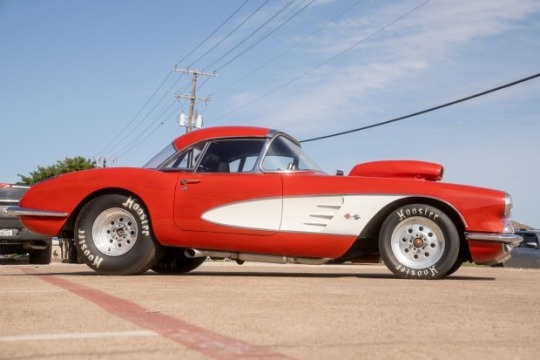
1958 Chevrolet Corvette
The fiberglass exterior is adorned in red with white coves and includes a removable hardtop and a lift-off hood with an integrated air scoop. A Stewart-Warner fuel-pressure gauge is mounted on the cowl, and the right-rear corner features a battery cutoff switch and external terminals. The gallery reveals cracks in the weatherstripping, pitted chrome, and paint imperfections.
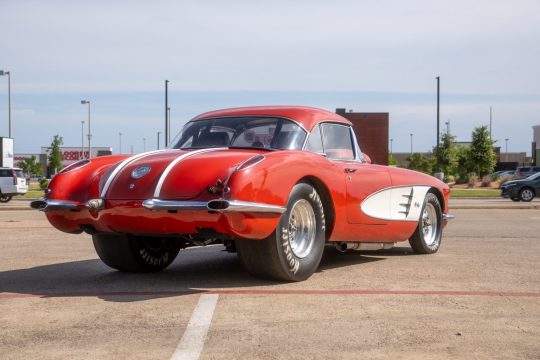
1958 Chevrolet Corvette
Polished 15” alloy wheels are shod with 25.0×5.0” front and 29.5×11.5” rear Hoosier drag tires, installed in April 2024. A crossmember supports the rear suspension, which has been modified with ladder bars, a diagonal link, and adjustable coilovers. The braking system includes front disc brakes and rear drums.
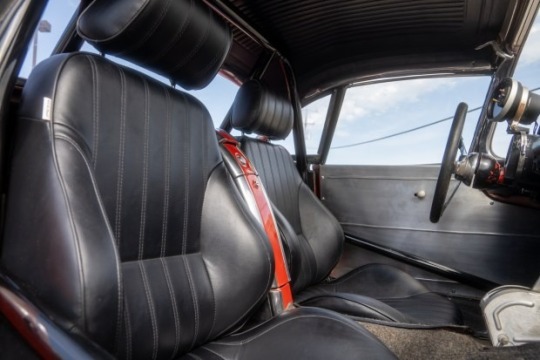
1958 Chevrolet Corvette
The interior is equipped with a roll cage and Procar high-back bucket seats in black. Enhancements include a B&M Pro Stick shifter, an MSD shift light, rocker-switch controls, and fabricated metal door panels. The gallery displays flaking paint and wear on interior surfaces.
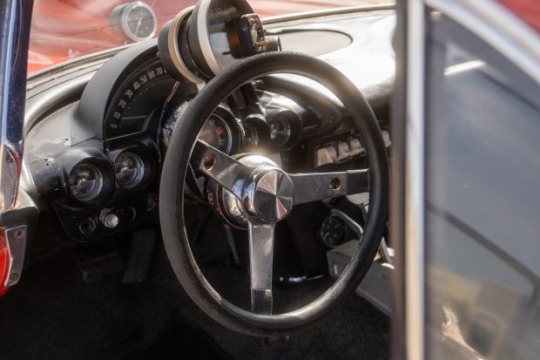
1958 Chevrolet Corvette
The three-spoke steering wheel is positioned in front of a 160-mph speedometer and auxiliary gauges. An AutoMeter pedestal tachometer is mounted atop the non-functional factory tachometer. Additional gauges for coolant temperature and oil pressure are located in the center console. The mechanical odometer is inoperative, and the total mileage remains unknown.
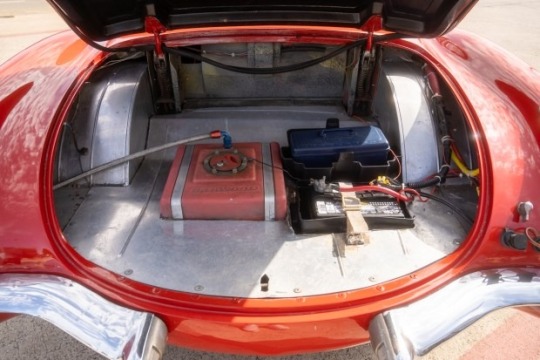
1958 Chevrolet Corvette
A Harwood plastic fuel cell is mounted in the trunk, which has been tubbed with fabricated aluminum panels to accommodate the rear wheels.
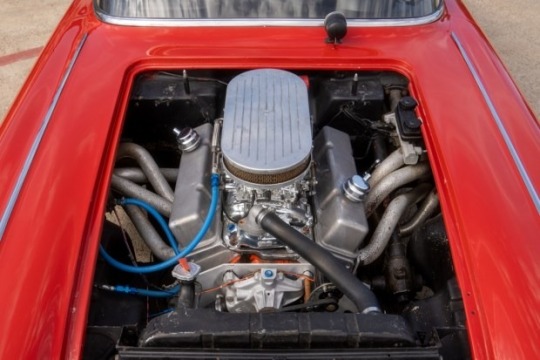
1958 Chevrolet Corvette
The 350ci V8 engine block, bored and stroked to 383ci, features four-bolt main bearings. The build includes forged pistons, ARP fasteners, a polished Edelbrock intake manifold, dual Edelbrock carburetors, an MSD ignition module, and Hooker long-tube headers that flow into side-exit exhaust pipes.
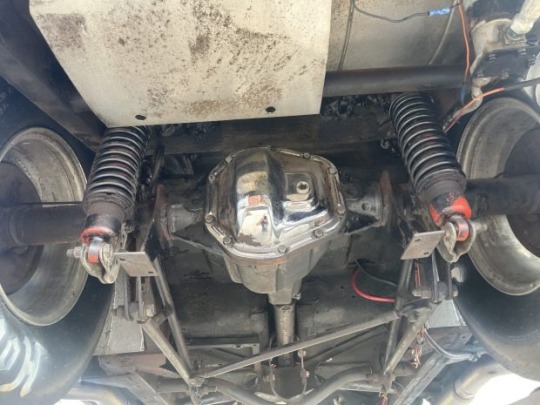
1958 Chevrolet Corvette
Power is transmitted to the rear wheels through a TH350 three-speed automatic transmission and a narrowed Dana 60 rear axle with a limited-slip differential.

1958 Chevrolet Corvette
141 notes
·
View notes
Text
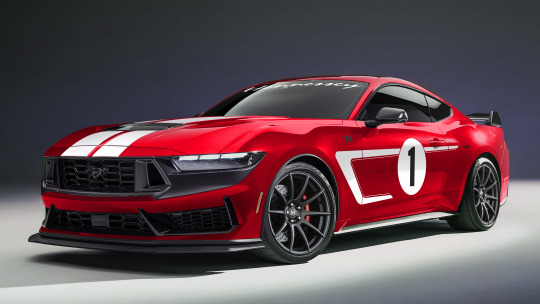
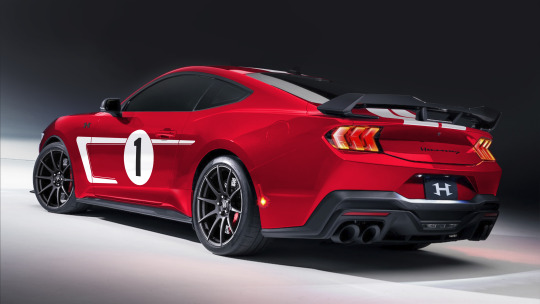
First Look: The Hennessey H850 Mustang Dark Horse
Hennessey Performance, the world-renowned Texas-based hypercar manufacturer and high-performance vehicle creator, announces high-performance supercharged upgrades for the all-new, seventh-generation 2024 Ford S650 Mustang Dark Horse. The comprehensive turn-key package dramatically boosts engine output and enhances the appearance of the latest iteration of America's iconic pony car.
Ford's completely redesigned 'S650' Mustang Dark Horse is fitted with Ford's naturally aspirated Gen-4 Coyote 5.0-liter V8. The automaker upgrades the Dark Horse with GT500 connecting rods and a dual throttle body to earn a factory rating of 500 horsepower. The 2024 Dark Horse may be ordered with either a Tremec 6-speed manual (3.73 gears) or with Ford’s 10-speed automatic (3.55 gearing). Regardless of transmission choice, the track-focused Mustang features upgraded multi-piston Brembo performance brakes on both axles.
Hennessey's experienced technicians, who have been 'making fast cars faster' for 32 years, fit the Mustang's V8 with a high-performance supercharger and a high-flow air induction system, upgraded fuel injectors, and a new fuel pump. Calibrated with an HPE Engine Management software upgrade, the ‘H850’ Dark Horse produces 850 horsepower and 650 lb-ft of torque – a 70 percent increase in power!
To complement its potent powerplant, the Hennessey 'H850' Ford Mustang Dark Horse is visually enhanced with a stylish carbon-fiber front splitter, carbon-fiber side skirts, and a carbon-fiber rear spoiler. Completing the exterior cosmetic enhancements are a set of stunning forged aluminum alloy wheels. Hennessey's embroidered head restraints are fitted to the seats, while Hennessey's badging and script adorn the quarter panels and rear fascia. Unique 'Heritage' graphics are optional.
#Hennessey#Hennessey H850#h850#cars#tuned#mustang#first look#news#Mustang Dark Horse#ford#tuners#hennessey mustang#Hennessey Performance
180 notes
·
View notes
Text

AMG GT R Roadster „The Beast of the Green Hell“.
Back in the days the visual update for the AMG GT coupé and roadster includes new front and tail lamps as well as a new design idiom for the tailpipe trims. The new light controls of the LED High Performance headlights now display parallels with the AMG GT 4-Door Coupé and therefore further strengthen the AMG GT family connection with the two-door models. A tri-functional, arched light guide takes on the functions of daytime running light, navigation light and turn signals.
The light of the LED tail lights also appears even deeper set and sportier through the dark background.
From the back the new look of the rear apron is striking, its sporty black diffuser insert was redesigned for the AMG GT, AMG GT S and AMG GT C. The twin tailpipe trims are now adapted to the lines of the AMG GT 4-Door Coupé ‑ round on the AMG GT and trapezoidal on the AMG GT S and AMG GT C. The rear design of the AMG GT R keeps its distinctive shape.
The AMG GT and AMG GT S are getting a new black grained sill cover on the bottom section. This makes for an extra-dynamic look. In conjunction with optional exterior packages, trim elements add individual highlights in high-gloss black, matt black, high-gloss chrome or carbon fibre.
Also, on request, the AMG GT and AMG GT S are available with a new y-spoke light-alloy wheel in matt black with a high-sheen finish. In addition, as an option for the AMG GT, AMG GT S and AMG GT C new 10-twin-spoke forged wheels in titanium grey with high-sheen finishes or in matt black with a high-sheen rim flange are available.
Mercedes-AMG One man, one engine Handcrafted by Michael Kübler @f1mike28 in Germany Affalterbach. Driving Performance is my Passion! Mercedes-AMG the Performance and Sports Car Brand from Mercedes-Benz and Exclusive Partner for Pagani Automobili. Mercedes-AMG Handcrafted by Racers.
The AMG GT high-peformance sports car (fuel consumption combined 12.5-11.4 l/100 km, CO2 emissions combined 284-261 g/km).
#amg#amggt#amggtrroadster#amggtr#amggtrpro#amggtroadster#amggtblackseries#gtr#mercedesamg#mercedes#mercedesbenz#affalterbach#onemanoneengine#pagani
13 notes
·
View notes
Photo
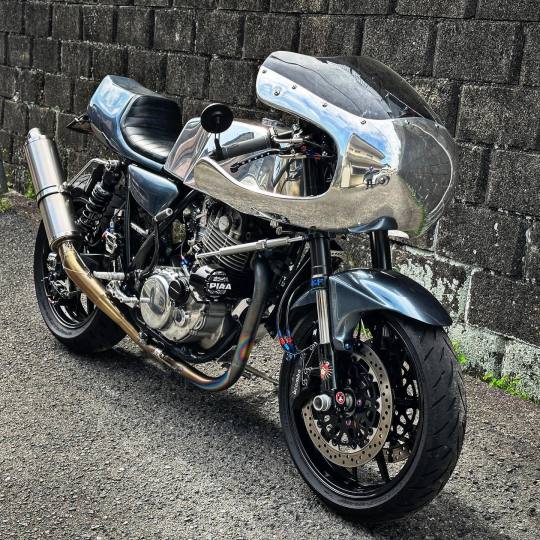
Omega Racer: ‘98 Yamaha “SR534” by @youziro1215 and Hilt’s Chopper’z of Hiroshima. Featuring a 534cc big-bore kit, Yoshimura cam and oil-cooler kit, Keihin FCR 39 carb, full titanium exhaust, FZR400 swingarm, Kawasaki ZXR400 forks, Brembo brakes, forged Gale Speed Type R wheels, Dunlop GPR300 rubber, alloy tank / fairing, and more. Full story today on BikeBound.com. ⚡️Link in Bio⚡️ https://instagr.am/p/CsGlGMrOQEU/
158 notes
·
View notes
Text
Techniques and craftmanship methods require for Jewelry making
Jewelry making involves a wide range of techniques and craftsmanship methods, each requiring specific skills, tools, and materials. Here are some of the most common techniques used in jewelry making, whether for handmade artisanal pieces or mass-produced collections:
Hand Fabrication
Sawing: Using a jeweler’s saw to cut metal sheets into desired shapes.
Filing & Sanding: Smoothing and refining metal surfaces or edges after cutting.
Soldering: Using heat to melt solder (a metal alloy) to join pieces of metal, such as attaching clasps, links, or settings.
Forging: Shaping metal by hammering it to create texture, thin it out, or curve it.
Polishing: Using buffing machines, wheels, or cloth to achieve a high-shine finish on the metal.
Casting
Lost Wax Casting: A mold is created from a wax model, which is then melted and replaced with molten metal. This is one of the oldest techniques used for making detailed metal jewelry pieces.
Centrifugal & Vacuum Casting: Used to ensure the molten metal flows evenly into the mold, minimizing air bubbles and imperfections.
Stone Setting
Prong Setting: Small metal prongs are used to hold a gemstone in place. Common for engagement rings.
Bezel Setting: A metal rim encircles the gemstone to hold it securely.
Pavé Setting: Multiple small gemstones are set closely together, often giving the illusion of a continuous surface of stones.
Channel Setting: Gemstones are set between two strips of metal, allowing for a seamless, smooth look.
Flush Setting: The gemstone is set flush with the metal surface, offering a sleek and modern aesthetic.
Gypsy Setting: Similar to flush setting but usually involves a hammered finish around the gemstone, used for bold, simple designs.
Engraving & Embellishment
Hand Engraving: Using sharp tools to carve intricate patterns or designs into metal surfaces.
Laser Engraving: A modern technique that uses lasers to create detailed engravings or inscriptions, often used for personalization.
Etching: Using acid or other chemicals to corrode the surface of the metal in specific patterns, creating a textured or detailed design.
Filigree
Wire Work: Fine wires of gold or silver are twisted and shaped into intricate designs, often with lace-like appearances. This technique requires high precision and is often used in traditional jewelry.
Enameling
Cloisonné: Small cells or compartments are created with metal wire, which are then filled with enamel (colored glass powder) and fired to create vibrant patterns.
Champlevé: Enamel is applied into recessed areas of metal, then fired to create a colored design.
Plique-à-Jour: A transparent enamel technique that allows light to shine through, giving a stained-glass effect.
Hammering & Texturing
Chasing: A technique where the surface of the metal is hammered from the front to create patterns or designs.
Repoussé: The reverse of chasing, where the metal is hammered from the back to create a raised design.
Texturing: Using different hammers, stamps, or other tools to create a variety of surface textures, such as hammered, brushed, or matte finishes.
Wirework
Wire Wrapping: Jewelry made from twisting and wrapping wire into shapes and loops, often around gemstones, beads, or crystals.
Weaving & Knotting: Using wire or string to weave intricate patterns, often incorporating beads or small stones.
Beadwork
Stringing: Threading beads, pearls, or gemstones onto a string or wire to create necklaces or bracelets.
Knotting: Tying knots between beads (commonly pearls) to ensure they don’t rub against each other and for added strength.
Loom Beading: Using a loom to weave tiny seed beads into patterns for bracelets, necklaces, or other accessories.
Electroforming
Metal Coating: This is a process where a base material (such as a wax or organic object) is coated with a metal layer through electroplating. It’s commonly used for creating lightweight, hollow jewelry pieces.
CNC & 3D Printing
CNC Machining: This computerized technique is used to carve precise patterns and designs into metal or wax, enabling intricate designs that are difficult to achieve by hand.
3D Printing: Used for prototyping or creating complex designs, 3D printing involves creating a wax or resin model layer by layer, which can then be cast in metal using traditional techniques.
Inlay & Marquetry
Stone Inlay: Stones, such as turquoise or lapis lazuli, are cut into thin pieces and inserted into metal grooves to create decorative designs.
Wood or Shell Inlay: Wood, shell, or other non-metal materials are inlaid into metal surfaces to create intricate designs or mosaics.
Embossing & Stamping
Stamping: Using metal stamps or dies to create patterns or letters on the surface of a piece.
Embossing: Using pressure to raise designs on metal surfaces, creating a three-dimensional effect.
Granulation
Beading Technique: Small metal beads or granules are applied to the surface of a piece and soldered to create intricate designs, often used in ancient and traditional jewelry styles.
Soldering & Welding
Soldering: Used to join metal pieces together with the help of solder and heat.
Laser Welding: A modern technique using laser technology to weld small or delicate pieces of metal together, often for intricate repairs.
Pearl & Bead Setting
Knotting: Hand-knotting is used in pearl necklaces to separate each pearl and add durability.
Glue Setting: Some beads and pearls are set using adhesives, especially in designs where drilling holes isn't practical.
By mastering these techniques and methods, jewelry makers can produce pieces ranging from simple, minimalist designs to complex, ornate creations. The choice of technique depends on the desired aesthetic, materials used, and the skill level of the jeweler.
5 notes
·
View notes
Text




Twins
Lysana and Visenya Raengyreon, twins, identical in every way but their personalities, burnished copper hair with highlights of platinum blonde and white gold. Lowlights of auburn and burgundy shaded their tresses, framing their alabaster complexions, doe eyes, and high cheekbones.
Lysana and Visenya Raengyreon, twin daughters of a noble Roman, a senator and a noblewoman. Fencers and Artists by innate nature. “Who knows? Maybe they'll start thinking smart and actually go lookin?” Lysana chirped.
Visenya, ever the pragmatist, snorted. Doubtful. They're too busy gorging themselves on grapes and blaming the barbarians for their indigestion.” She lunged, her blade a blur of motion, but Lysana sidestepped with a graceful ease that belied her fiery spirit.
“Think they go white and gold for decorative armour again?” Lysana asked. “I keep looking forward to black and gold. But it just doesn't happen. Though, I bet it's mainly the emperors and the general wearin it.”
Their eyes a molten gold mixed with crimson and amber holding a luminescent type glow depending on the lighting they were in. It was as if they were born with an inner light that only grew brighter as they aged. Their skin, pale as snow, was unmarred by even the slightest blemish, save for the intricate dragon scales that adorned their arms and backs shimmering with the same intensity as their iridescent undertones of the alabaster complexion.
The twins love decorative armour, art, blacksmithing and everything craftsmanship related. Something they were known for. Much to the chagrin of their parents and four older brothers. A melding of a warrior spirit, an artist’s hands, a philosopher’s mind, and a passion for craftsmanship which rivalled Pluto’s love for Proserpina.
They would lather the blacksmith with questions pertaining to alloys and metals like there wasn’t a tomorrow. Like waiting to ask them would be akin to asking them to betray their crafts.
During gatherings and feasts, they were left to their own devices because their older brothers? They were always the centre of attention of the people for as long as they remembered. While they tried sneaking away one evening feast, well, they would have had the General Marcus Acasius and Lucilla were not present.
Tales of a goddess Minerva split into twins, forming on the tips of tongues of bards and jesters alike, when Marcus finally saw them in person? They were sparring over a cheese wheel and who won got the first piece of said cheese wheel. "Its the good stuff Vis, aged for 36 months level of goodness right here."
Twins who preferred mead to wine, which amused generals and legionnaires that were lucky enough to speak to them, "Mead for the soul." Lysana started.
Visenya finished, "Wine for the weak."
They were dining on cheese, mead, steamed ham, roasted vegetables and roasted duck. "Leave destruction to men of war." Lysana. "Creation is better."
Visenya nodded. "Creation endures."
"Creation survives and supersedes the art of destruction." Lysana added in.
Lucilla looked at Marcus looking down at the twins from a balcony.
Visenya, emboldened by mead, shouted, "By Minerva, I shall forge armour that will outlast any emperor!"
Lysana, ever the firebrand, countered, "And I shall decorate it so beautifully, it will make even the gods weep!"

Note: If you want more of these two. Let me know.
Dividers: @cafekitsune
#Muggy's Ideas#muggy's ideas#gladiator 2#gladiator 2 fanfic#gladiator 2 fic#gladiator 2 fanfiction#gladiator 2 Lucilla#gladiator 2 General Marcus Acasius#Lucilla#General Marcus Acasius#General Marcus Acasius fic#General Marcus Acasius fanfic#General Marcus Acasius fanfiction#original female character
2 notes
·
View notes
Text
#alloy wheels#custom rims#car rims#racing wheels#Beadlock Wheels#custom wheels and rims#custom wheels#custom wheel rims#custom 4x4 rims#amg forged wheels#best replica wheels#4x4 beadlock rims#wheel rim manufacturer#forged steel wheels#best wheel manufacturers#forged alloy wheels#Aftermarket wheels online#Forged wheels uae#Forged wheels manufacturers
0 notes
Photo

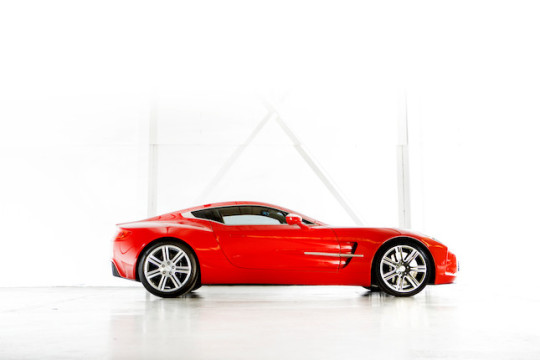
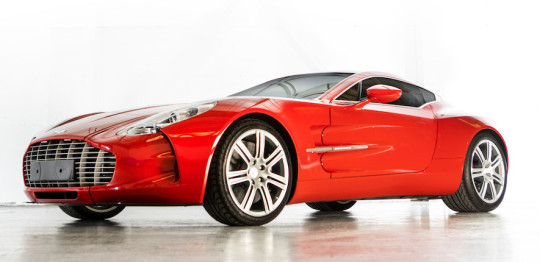

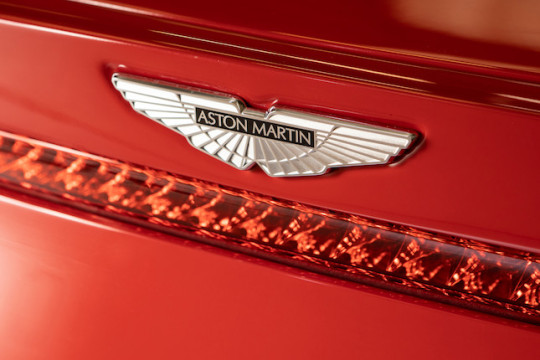
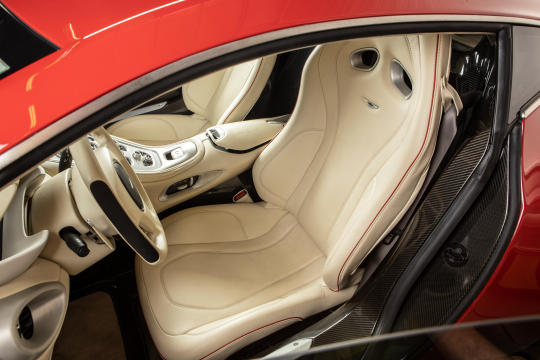

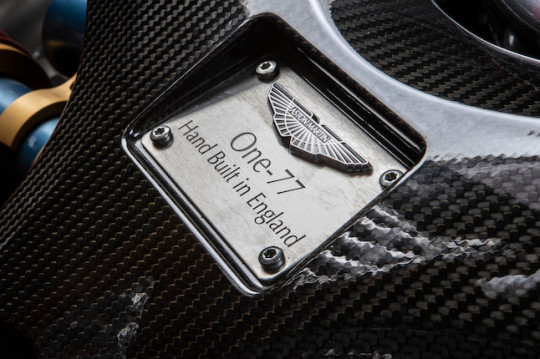
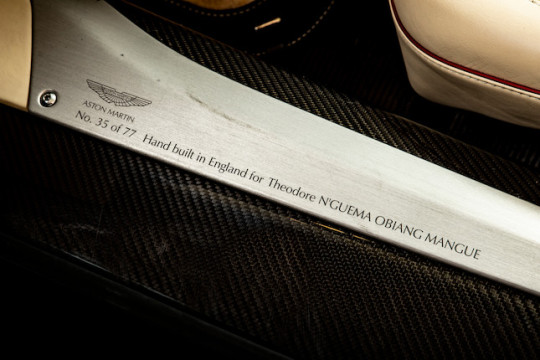
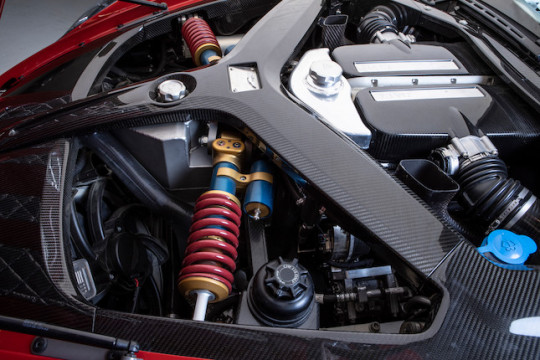
Aston Martin One-77 (property — before being seized by Swiss authorities — of the son of the leader of one of the most corrupt governments in Central Africa)
In keeping with its tradition of producing limited edition, hand crafted exotica for the wealthy aficionado, best exemplified by the DB4 GT Zagato of the 1960s, Aston Martin previewed its proposed One-77 'hypercar' at the 2008 Paris Motor Show. 'The finished One-77 made its official debut in April 2009 at the Concorso d'Eleganza Ville d'Este, held on the shores of Lake Como in Italy, winning the 'Award for Concept Cars and Prototypes'. Designed by Marek Reichman, it was the fastest and most powerful Aston Martin ever built, with a top speed of 220mph, and also the most expensive, carrying a price tag of £1,150,000. Hailed by its maker as "possibly the world's most desirable automotive art form", the One-77 with its long bonnet and short tail was every inch the classically proportioned Gran Turismo, combing muscular pugnacity and feline grace in equal measure. A two-seater closed coupé, the One-77 featured advanced technology in the form of an immensely rigid and lightweight carbon fibre monocoque chassis, which carried a seamless body traditionally handcrafted in aluminium. Made from a single sheet of aluminium, each front wing was said to take one craftsman three weeks to produce. Other state-of-the-art features included bi-xenon headlamps with integrated LED side lights and direction indicators, LED rear lamps (fog and reverse), carbon fibre front splitters, carbon fibre rear diffuser, and active aerodynamics with deployable spoiler. Providing the horsepower needed to breach the magic 200mph barrier was a stretched (to 7.3 litres) version of Aston Martin's existing 48-valve V12 engine. Extensively reworked by Cosworth Engineering, it produced 750bhp and 553lb/ft of torque, and was the world's most powerful normally aspirated road-car engine at the time of the One-77's introduction. Cosworth's extensive re-engineering included fitting dry-sump lubrication, which enabled the V12 to be carried 100mm lower in the One-77's chassis than in that of the DB9. Like the V8 in the One-77's Vantage sister car, the V12 engine was mounted towards the centre of the chassis, well aft of the front axle line in the interests of optimum weight distribution, to which end the six-speed automatic/manual transmission was located at the rear in the form of an integrated transaxle. Power was transmitted to the limited-slip differential by a carbon fibre prop shaft encased in a magnesium alloy torque tube, reaching the road surface via 20" forged alloy wheels - 7-spoke or 10-spoke - shod with Pirelli P Zero Corsa tyres.
Unusually for a road car, the One-77's all-independent suspension featured pushrod actuation of the adjustable mono-tube dampers, a system more commonly found in modern competition cars. There were double wishbones at all four corners: the front incorporating anti-dive geometry, and the rear anti-squat and anti-lift. The suspension was also electrically adjustable for both ride height and rate change.
The rack and pinion was power assisted, delivering 3.0 turns lock-to-lock, while the steering column was adjustable for both tilt and reach. Braking was supplied by carbon ceramic discs all round, gripped by six-piston callipers at the front, four-piston callipers at the rear. Dynamic Stability Control (DSC), Anti-lock Braking System (ABS), Electronic Brakeforce Distribution (EBD), Emergency Brake Assist (EBA), and traction control were all incorporated in the interests of controllability and safety. Releasing the driver's door, which swings out and arcs upwards, the One-77's fortunate owner would be confronted by a leather-trimmed sports steering wheel, electrically adjustable lightweight memory seats, and dual-stage driver/passenger front airbags. Other interior features included automatic temperature control, a trip computer, and touch-sensitive map-reading LED lights. Powerfold exterior memory mirrors came as standard, while front/rear parking cameras were an option. Number '35' of the 77 built, this EU model has a legend engraved on the door sill stating that it was 'Hand built in England for Theodore N'Guema Obiang Mangue'. Finished in red with red-piped cream interior, the car is offered with Equatorial Guinea registration papers.
#Aston Martin One-77#DB4 GT Zagato#Paris Motor Show#Concorso d'Eleganza Ville d'Este#Marek Reichman#Theodore N'Guema Obiang Mangue
76 notes
·
View notes
Note
relative to your javelin/plumbata post, Tod Todeschi or some other Pollack last name does do a lot of experimental archaeology type videos where he tests stuff like that. Results vary but I respect he will actually try stuff out.
But I am autistically into old smelting and bronze/iron age stuff as well and I think there's a lot of potential on how many things we take for granted now as commonplace used to be extremely limited. Certain foundries and smelters, even if privately owned, would be borderline national secrets/treasures because they could consistently produce good quality metals or knew HOW to build them right. On par with monks sneaking silkworms out of china. We have accounts of Vikings making it as far as Afghanistan specifically to find burial mounds for Indo Persian wootz blades.
The Hittites were pretty good at early Ironworking for example and well-made bronze is probably better than iron except bronze is an alloy and iron can be refined much easier. I know the French weirdly kept refining brass and ARCO brass/other types in the 19th century and while not the same strength as steel the way the US and Brits innovated, French Brass was stronger than anyone else's.
Fuck I mean IIRC the Chinese spent centuries in West/Central asia like the Stans trying to learn how to breed better warhorses because old horses used to be a lot smaller and things like chariots were how you utilized horses in war instead of individually.
There's so much cool shit you can do just around the idea of foundries and smelting and it's not even been 200 years since we really figured out steel and even the 1990s saw a huge increase along with aluminum technology. Even the first Conan movie kinda touched on this with how rare materials were relatively speaking. I'd love to see a period or fantasy related story that deals with a lot of intrigue and logistical concerns like that. A warlord fighting a grueling campaign that makes no sense tactically but it's because he wants to capture a series of foundries that utilize some mythical pass high in the mountains for their bellows, or specifically daming part of a river to create a faster pressure current for a downward falling water wheel for the actual forging.
Prior to modern technologies, making steel was a literal pain in the ass and insanely wasteful. Closest analogy I can think of is raising an entire cow from birth, killing it, and only taking 1 cut of meat from the carcass and leaving the rest. You didnt "make" steel, you made this disgusting lump of iron and carbon as homogeneous as you could and prayed to God that at the center was a nice good hunk of steel you could then forge into an ingot.
Also FWIW it's less that the javelins were designed to break and bend IMO and simply that its a possibility especially in an actual battle. Oakeshott talks about Celtic leaf bladed swords and the front ranks retiring to the rear to bend kinks out of them. I'd say it's less about iron vs steel and more about heat treat and fucking NO ONE figured out actual mathematical heat treat shit until very recently. Toledo made swords (also known as a specific pattern of blade kind of like a thrusting claymore) are famous for having very rigid blades at their base but very flexible and springy at the tips. In the era where heat treat was more like a cooking recipe or an AdMech ritual than hard scientific fact, being able to CONSISTENTLY produce good heat treated blades was a huge sign of quality. Sorry for the autism but I love metallurgical history.
Nah, you're good, big dog. Most of the concepts are familiar to me, but they're good for bringing to the general discussion table without, you know, me having to type all of that out.
But yeah, the main crux of my argument is based on a few things you mentioned. You, as far as I understand it, can't just go off and harden the average stuff you'd have gotten out of a mine in the Roman empire, even after being smelted. You need to tap the famous and rare(esque) deposits of The Good Shit and buy ingots and such from them. Like you said, on a gross scale they can tell by this point how the carbon-iron interaction is working, but they're much less familiar with, like, ingots from bumfuckulum are better than ingots from frottingshire because of the specific nickel and magnesium content or whatever.
And like you mentioned, being able to consistently produce heat-treated steel is a sign of quality, which means your smiths (Roman ordnance smithies-- insofar as any existed-- local dudes who live near the garrison, dude who follows around the army with his dinky forge setup) can't be average smiths, you can only hire big-dick smiths to do their fanciest work, which is pretty stupid to do for an item that, speaking from a soldier's perspective, is gonna handled roughly, barely maintained, and haphazardly reclaimed. Plus it's a long, narrow spike of metal in an army that used shortswords and small-segmented, scale and mail armor. This is like 1500 years before we're good enough at metallurgy to be making rapiers and suchlike, your javelins have a short service life anyway. Just doesn't make sense to go whole-ass on quality from a logistics point of view. It's just that "they were meant to bend in an enemy's shield" makes them sound cool and clever and you cool and clever for knowing that, whereas "they did it to save money and production time" just sounds boring and lame to Joe Average.
On a related topic to something you mentioned, it seems like the understanding is spreading that early iron was of moderate-at-best advantage against good quality bronze work, and lacks several very real advantages that bronze has. It just so happens that bronze leaves you utterly dependent on trade networks to source at least one of those high-demand metals that generally aren't found together, while iron you "just" source and smelt and work. I've seen more and more people suggesting what immediately occurred to me when I read this, which was that not being reliant on trade networks meant you could be a lot more aggressive with relative impunity, and this explains a lot of infamous Iron-age belligerence more than just "they were powerful and vengeful and had Super Swords"
3 notes
·
View notes
Text
Factory
Nikola Vaptsarov 1909-1942
(translator unknown)
A factory, Clouds of smoke above. The people – simple, The life – hard, boring. Life with the mask and grease-paint off Is a savage dog snarling.
You must tirelessly fight, Must be tough and persist, To extract from the teeth Of the angry, bristling beast A crust.
Slapping belts in the shed, Screeching shafts overhead, And the air is so stale You can’t easily Deeply Inhale.
Not far off the spring breeze Rocks the fields, the sun calls... Leaning skyward the trees Shade The factory walls. How unwanted, forgotten And strange are the fields ! They have thrown in the dustbin The sky and its dreams. For to stray for a second Or soften your heart, Is to lose to no purpose Your strong worker’s arm. You must shout in the clatter And din of machines For your words to pass over The spaces between.
I shouted for years – An eternity ... I gathered the others too shouted in chorus – The factory, the machinery And the man in the farthest, darkest corner. This shout forged an alloy of steel And we armoured our life with its plate. Just try putting a spoke in the wheel – It’s your own hand you’ll break.
You, factory, Still seek to blind us With smoke and soot, Layer on layer. In vain! For you teach us to struggle. We’ll bring The sun Down to us here.
So many toil-blackened faces Under your tyranny smart. But one heart within you tirelessly Beats with a thousand hearts.
6 notes
·
View notes
Text
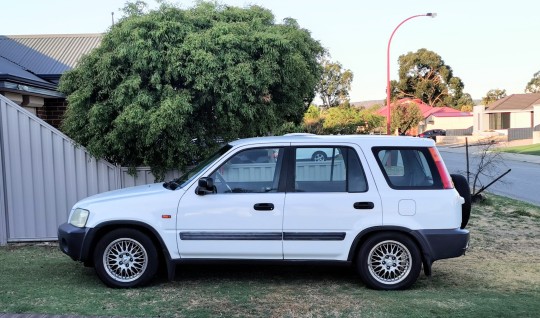
I have had the original 16x7+40 CG22 BBS forged alloys from my Y33 Cima in the shed for years. When i looked at them they were in better condition than i remembered so i test fitted the 2 that held air on my RD1 Honda CR-V. These look a lot better than the G50 Q45 wheels currently fitted so i will be getting new tyres and giving them a good clean before fitting them permanently to the Honda.
5 notes
·
View notes
Photo

Back in a former life, I had an addiction that I loved beyond sanity. Here’s the story of it. 2002 2003 2004 2005 2006 2007 2008 2009 pt1 2009 pt2 2009 Redux
This is the final spec list for my glorious, insane Brutal Truth.
Nissan Skyline BCNR33 GT-R (Type 2) manufactured in April 1996. JDM non V-Spec vehicle retailed through Osaka Nissan Prince in May/June 1996. Imported to the UK in June 1997. Remained in original JDM spec without speedometer conversion until August 2002. Only the steering wheel & white dial sets were fitted in Japan.
Nismo RB26N1 bare engine: [N1 water pump (improved flow & less cavitation)/Reinforced cylinder block head bolt boss/Increased sump capacity (6L 20w60)/1.2mm oil restrictor]
N1 head with 0.5mm overbore (2598cc)
Cryogenically hardened N1 crankshaft
Wossner forged & cryogenically hardened pistons
Abbey Motorsport reinforced & cryogenically hardened con-rods
ACL Race Series conrod & crankshaft bearings
Tomei sump baffle kit
Tomei high flow (larger drive gears) oil pump
HKS 1.2mm metal head gasket
Tomei Procam Spec 2 cam kit (270 degree inlet & outlet with 10.25mm lift)
HKS V-Cam System Step 1 Type B (variable 248-278 degree inlet; replaces Procam inlet camshaft)
HKS vernier cam pulleys
HKS kevlar reinforced timing belt
Trust metal intake & throttle gaskets
HKS front pipe & decat gaskets
GReddy Iridium 08 Racing sparkplugs
Mocal 19-row oil cooler & Abbey Motorsport remote oil filter assembly
Abbey Motorsport catch tank & washer reservoir with SFS breather hoses
Abbey Motorsport Pro Alloy large radiator
Tomei fuel pump, fuel regulator & 600cc injectors
A’PEXi Power Intake induction kit
A’PEXi GT Spec intercooler (237x610x136mm) & hard pipe kit
HKS GT-SS turbos
HKS twin AFM delete kit
Tomei turbo elbows
HKS downpipes
HKS Silent Hi-Power exhaust
Abbey Motorsport 80mm decat pipe
Mine’s VX-ROM
HKS F-Con V Pro
HKS EVC 6 boost controller (1.6 bar)
AEM wideband lambda sensor
Splitfire DI Super Direct Ignition System
HKS Circle Earth kit
HKS GD Max twin-plate clutch (with lightened flywheel)
Abbey Motorsport rebuilt transfer box
Abbey Motorsport rebuilt gearbox with cryogenically hardened gear set, modified Nissan synchromesh upgrade and OS Giken strengthening plate
Abbey Motorsport rebuilt rear diff
Nismo gearbox mounts
Nismo Solid Shift gear stick (10% short shift)
Omex Shift Light Sequential
Sunsei SE-135 solar panel trickle charger mounted on a custom aluminium riser between the rear parcel shelf speaker enclosures.
Team Dynamics Equinox alloys 19x9.5, ET+15 in silver with polished stainless steel rim.
Falken FK452 265/30/19 Y-rated tyres
Cusco brake master cylinder brace
Cusco rear steering delete kit
Cusco front & rear upper suspension links
AST Sport Line 1 full suspension kit with UK spring setup
Nismo stainless steel braided brake hoses
StopTech 355mm rotor 4 pot caliper front brake kit
StopTech 355mm rotor 2 pot caliper rear brake kit with Abbey Motorsport modified pad retainers
Ferodo DS2500 brake pads front & rear
Bomex AD-390 front splitter
Nismo R34 smoked front indicators in custom aluminium mounting plates finished in crackle black
Nissan Xenon headlamp units
Border Racing Aero Fenders (vented front wings) with silver GT emblems from a R32 Skyline
Nismo smoked side repeaters
Top Mix one-off FRP twin blade rear spoiler on custom aluminium mounting plates
Entire exterior resprayed in BMW black (code 086) base and lacquer
Nissan Motorsport International carbon fibre B-pillar plates
PIAA carbon effect silicon wipers, front pair with spoilers, rear without
Nismo white face dial sets (dashboard & centre console) in carbon fibre panels
AEM AFR gauge mount replaces the lighter socket
HKS EVC display mounted on custom carbon fibre plate replacing the ashtray
Lighter socket relocated to the fog light switch panel
Nissan Momo steering wheel (with airbag)
Dressycar Nismo harness pads
Redline Automotive leather gearstick & handbrake gaiters
Abbey Motorsport carbon fibre door sill trims
Carbon fibre boot sill trim
Inlet plenum and sundry induction pipework finished in powder grey
Trust clear cam pulley cover
HKS Kansai Service carbon fibre spark plug cover
Right hand cam cover finished in crackle black
Nismo radiator & washer reservoir caps
HKS Kansai Service front strut brace finished in high gloss black
GReddy aluminium slam panel finished in crackle black
Tein bonnet dampers with black sleeves
Custom made one-off Cobra Misano Lux front seats: [Alcantara (colour code 9189) outers/Alcantara (colour code 9182) centre panels/One-piece carbon fibre backs/Sidewinder bases on custom subframes adapted by Abbey Motorsport/Cobra logo in silver thread on the headpads/GT-R logo beneath the grommets on seat backs]
JVC KD-AVX2 multi-media DVD/CD receiver with built-in 3.5” widescreen monitor
2x JL Audio Evolution VR600-CXi 6” speakers (front)
2x JL Audio Evolution TR650-CXi 6.5” speakers (rear)
Multiple and interlaced Thatcham rated security systems.
500 bhp. 520 ft/lb.
Ludicrously, hilariously, unbelievably fast.
Hope you enjoyed this little trip down memory lane with me. Cheers! JM.
(Photo by N. Liassides.)
#r33#bcnr33#skyline#gt-r#nissan skyline#Abbey Motorsport#HKS#Bomex#Tomei#A'PEXi#GReddy#Nismo#RB26N1#Mocal#Team Dynamics
13 notes
·
View notes